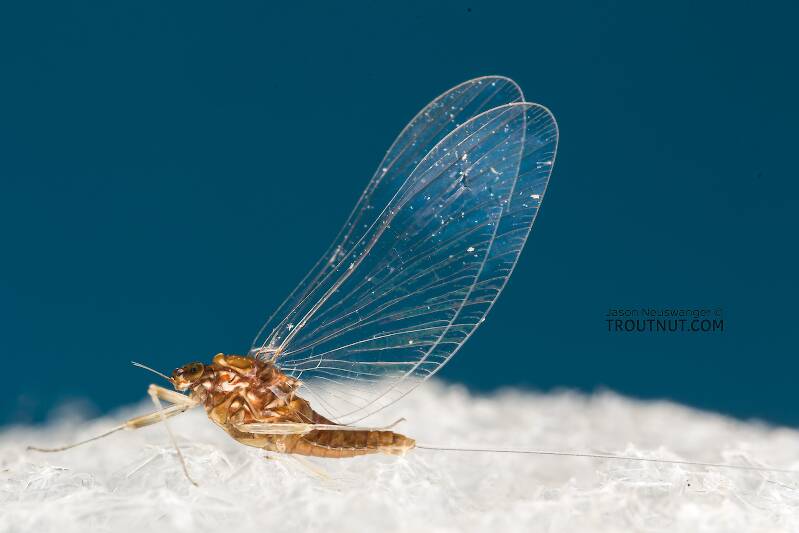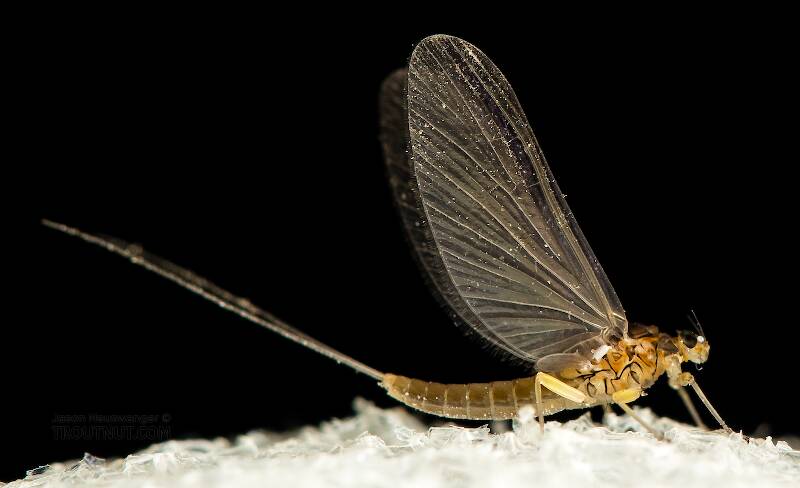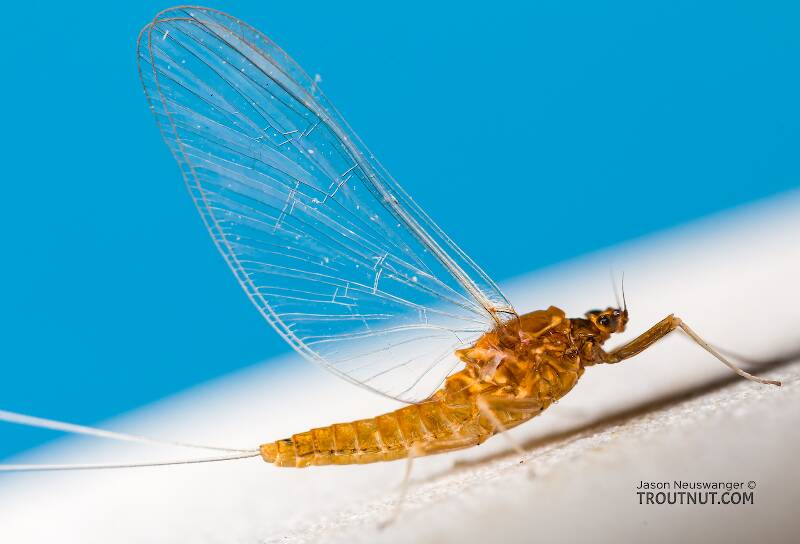
Hex Mayflies
Hexagenia limbata
The famous nocturnal Hex hatch of the Midwest (and a few other lucky locations) stirs to the surface mythically large brown trout that only touch streamers for the rest of the year.
Featured on the forum

This specimen resembled several others of around the same size and perhaps the same species, which were pretty common in my February sample from the upper Yakima. Unfortunately, I misplaced the specimen before I could get it under a microscope for a definitive ID.

Troutnut is a project started in 2003 by salmonid ecologist Jason "Troutnut" Neuswanger to help anglers and
fly tyers unabashedly embrace the entomological side of the sport. Learn more about Troutnut or
support the project for an enhanced experience here.
This topic is about the Mayfly Family Baetidae
"These little critters supplant the importance of many other well-known mayfly hatches."
-Fred Arbona in Mayflies, the Angler, and the Trout
Arbona did not overestimate these critters. Their great numbers and multiple broods each season make up for their size, which is rarely larger than size 16 and often smaller than size 20.
Hardly mentioned in angling literature prior to the middle of the last century, baetids have become increasingly important to anglers, rivaling any other family of mayflies in this regard. This is largely due to the extension of fishing seasons that now include the early and late periods when this family’s species usually dominate hatching activity. Another important reason is the tremendous improvement in tackle allowing more practical imitation of these little mayflies. The dramatic ecological changes in many of our watersheds and the subsequent impact this has had on the makeup of taxa populations is also a factor.
Common baetid hatches with a national distribution are the species Acentrella turbida, Baetis brunneicolor, and Baetis tricaudatus. In the West, Baetis bicaudatus, Diphetor hageni and Plauditus punctiventris can also be common. In the East and the Midwest, look for Baetis intercalaris and Plauditus dubius. The species Iswaeon anoka is important in both the West and Midwest. Some of the Procloeon and Anafroptilum (previously Centroptilum) species are coming to the increasing notice of anglers across the country.
Stillwater anglers are likely to run across Callibaetis ferrugineus ferrugineus in the East and Midwest. Western anglers will find Callibaetis californicus and Callibaetis ferrugineus hageni to be very important.
Streamside identification of these mayflies to the level of genus, let alone species, has always been difficult. It's a very rare angler who can correctly proclaim a mayfly to be "Baetis" at a glance and be right on purpose, rather than making a lucky (albeit likely) guess at that genus versus the many others in the family. This is now even more so as new taxonomic evidence has shown hind wing conformation (or lack of hind wings) and other features are less dependable as ways to tell the genera apart. Many of the lesser-known species probably produce excellent local hatches but have not caught enough attention to be properly recognized by anglers. The lesson is that we should not assume anything about the identity of many Baetidae hatches we come across; they may not even be in the Baetis genus, let alone familiar species.
Example specimens
Jawajohn
Posts: 1
Posts: 1
Jawajohn on Jan 26, 2012January 26th, 2012, 6:17 pm EST
Rosenbauers rabbit foot emerger on vimeo
Martinlf on Jan 27, 2012January 27th, 2012, 5:53 pm EST
Great video and fly. It will catch fish!
"He spread them a yard and a half. 'And every one that got away is this big.'"
--Fred Chappell
--Fred Chappell
Martinlf on Jan 27, 2012January 27th, 2012, 6:23 pm EST
Some other very good tying and insect videos. If the URL works, take a look at
http://vimeo.com/22482739
Hendricksons!
Then sample the other stuff there.
http://vimeo.com/22482739
Hendricksons!
Then sample the other stuff there.
"He spread them a yard and a half. 'And every one that got away is this big.'"
--Fred Chappell
--Fred Chappell





